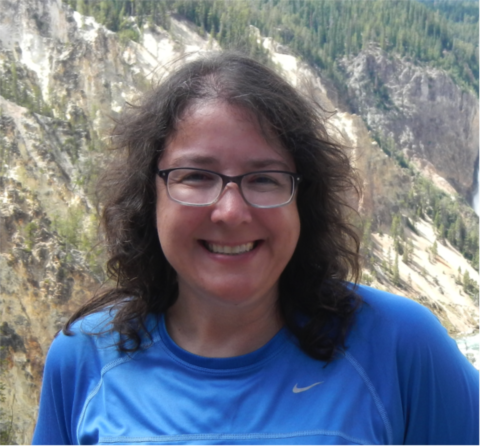Laura Guertin, Penn State University Brandywine – Science and Communication
 There are many challenges breaking down science for consumption.
There are many challenges breaking down science for consumption.
Laura Guertin, professor of earth science at Penn State Brandywine, details a solution.
Laura Guertin received her B.A. in Geology from Bucknell University and her Ph.D. in Marine Geology and Geophysics from the University of Miami’s Rosenstiel School of Marine & Atmospheric Science. Dr. Guertin’s primary research focus is the effective integration of innovative technologies to improve student learning in introductory-level geoscience courses, particularly to improve student scientific literacy, information literacy, and geospatial skills. Research projects have included student-generated audio narratives, ePortolios with Google Earth and ArcGIS Story Maps, and other technological tools for geoscience research and outreach. Her courses cover Earth science topics such as oceanography, climate change, energy, water, and sustainability. Penn State University has honored Guertin with university-wide awards, including the George W. Atherton Award for Excellence in Teaching (2006), Teaching and Learning with Technology Impact Award (2019), and The President’s Award for Excellence in Academic Integration (2020).
In 2009, she was recognized at the national level with the Biggs Earth Science Teaching Award from the Geological Society of America (GSA). In 2015, Dr. Guertin was elected as a GSA Fellow and was named one of 100 women nationwide as an INSIGHT Into Diversity Inspiring Women in STEM. In 2020, the Journal of Geoscience Education recognized her with the journal’s Outstanding Reviewer Award. She has been honored with a U.S. Congressional Citation for civic and community engagement efforts, and a United States Senate Certificate of Special Recognition for her work at sea with the National Oceanic and Atmospheric Administration (NOAA).
She is the campus coordinator for the environmental inquiry minor and Earth sustainability certificate. She has received funding from the National Science Foundation, EPA, and the Society of Women Environmental Professionals. She is the past chair of the Geoscience Division of the Council on Undergraduate Research and a former councilor-at-large with the National Association of Geoscience Teachers. She blogs for the American Geophysical Union (AGU) on geoscience education and educational technology at GeoEd Trek: http://blogs.agu.org/geoedtrek/ and in 2015 was named to EdTech’s Dean’s List for Must-Read Higher Education I.T. Blogs. She enjoys traveling to National Parks and attending Philadelphia sporting events
Science and Communication
Science has a communication challenge. Scientists are trained and successful in sharing their research results in professional peer-reviewed journals, but the general population does not have access to these publications, or if they do, they are left scratching their heads trying to figure out what was done and why it matters. To broaden the reach of sharing scientific accomplishments, scientists need to focus on telling stories, and using tools to communicate those stories, such as art. I use quilts to tell stories of science. You may not think of pairing science and quilts together, but showcasing a science narrative in a quilt immediately provides a welcoming visual to invite a viewer to explore fabrics and patterns as they are laid out in the display. As one learns the story presented in a quilt, I have found they want to share their own quilt or blanket story (everyone has a favorite blanket), and then take the information they have just learned and pass it along to others, thereby engaging in the most important step all individuals can take when it comes to building science literacy – just to start talking about science.
I have seen this several times when I have displayed quilts from my collection Stitching Hope for the Louisiana Coast. These quilts are based upon stories of adaptation and resilience shown by residents in southern Louisiana, an area that is known for its doom-and-gloom stories from sea-level rise, habitat degradation, and impacts from more intense hurricanes year after year. Each quilt contains one success story that is told through panels of fabric across the creative work. Scientists and non-scientists alike are able to share, to teach, to learn, and importantly communicate not just the “what” of scientific research but “why” the research matters and how it benefits society.


